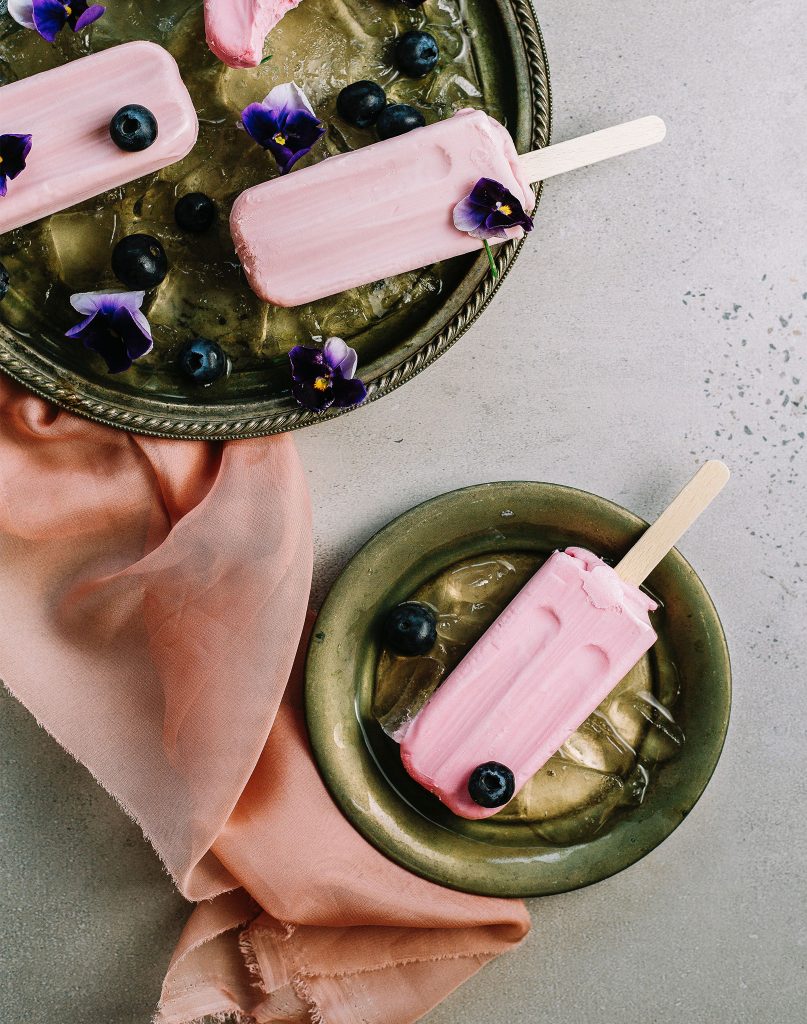
Bukom’s Fighting Fists
A look into Bukom’s prized fighting tradition.

A look into Bukom’s prized fighting tradition.
in Food
New York based food stylist Maggie Ruggiero is one of many creatives helping to invent a new visual vocabulary for food. With her attention to tantalising closeups and mouth-watering textures, the stylist comments on the irresistible phenomenon of food porn.
This promise of succulence… it takes you places.
Maggie Ruggiero

Food stylist Maggie Ruggiero is in the business of seduction. “Good food photography has to has to be titillating”, says Ruggiero, “you’re trying to trigger everything. You’re trying to tap into that human desire.” Flipping through Ruggiero’s catalogue is to be seduced with the rapturous sensuality of food and the lavish pleasures of eating. With each closeup, edible textures are imbued with a reverence that is redolent of a Caravaggio supper.
As a regular contributor to independent food journals, the New York based food stylist understands the visual currency of her medium. “Food porn isn’t just about lust and gluttony, it’s about envy,” Ruggiero explains. “There’s so much vanity involved in food. Part of its porn is that it can be decadent.” The stylist continues to elucidate on an industry technique called ‘The Cheese Fall’, in which a cheese-filled food item is pulled part to reveal exceptionally succulent golden threads of fat and cheese. “When you have something that has cheese in it and it pulls apart like that, people go nuts,” says Ruggiero, “it’s all about suggestion. You have to keep things wet, moist. Glistening always helps. This promise of succulence… it takes you places.”
Charles Spence, a Professor of Experimental Psychology at Oxford is deeply empathetic to the seductive potential of lavishly composed food portraits. He recognises that it takes a special kind of quality to efficiently tantalise and convey gastronomic pleasure. “Nothing gets people’s brains more excited than a picture of food when you’re hungry,” says Spence, “we just can’t turn off that evolutionary part.
Part of that evolutionary quality is tied to the concept of “sensation transference”, a well-used advertising technique that plays on the unconscious transfer of ideas of one thing onto another. It is a means of fetishising consumer goods. According to Spence, colour, sound, and setting have a proven effect in modifying consumer perception. As an example of this theory in practice, food served in heavy bowls seems more dense and blue food somehow saltier.
The power of the carefully perfected food image has never enjoyed greater currency than in these current times of social influence. “We are starting to see a whole set of food that is primarily for visual consumption”, explains Spence. As any savvy, enthusiastic foodie would attest, a social media food shot must be primed and namechecked with a network of hashtags to influence and convey gastronomic credibility. “There is an overemphasis on the beautiful and downplay on taste,” laments Spence of a digitised food culture proliferated through an endless stream of likes and shares.
Within the industry, restaurants are responding to the reality that food now exists for the imagination of the online consumer. Recently, a restaurant in Israel went so far as to commission curved plates that included smartphone slots to illuminate the dish within a perfect halo of light.
Today, where the worship of food, consumption and technology co-mingle in the digital age, the emphasis on perfection and exhuberance have urged us to rethink the ways we communicate about one of our most complex and lifelong relationships with food, and how the pleasure of a meal is to delight with both our eyes and our bellies.
Native New Yorker, Maggie Ruggiero, entered the gastronomical world after selling her East Village bar and using the proceed to attend culinary school. She logged time in some of the city’s most esteemed restaurant kitchens before shifting her focus to food styling and recipe development. Her clients include The New York Times Magazine, Gather Journal, Vogue, Gourmet Magazine and many more.
Follow @maggie_ruggiero.
As head of the Crossmodal Research Laboratory at Oxford University, Professor Charles Spence has spent the last two decades researching how people perceive the world around them, earning him the international reputation as the expert in multisensory perception and experience design. He has popularized the term ‘gastrophysics’ and leads the field in this groundbreaking area of science that is rapidly transforming the way in which we all experience what we eat and drink. As well as authoring his first book ‘Gastrophysics’, Professor Spence has consulted for many multinational companies, advising on various aspects of multisensory design, packaging and branding, and has conducted research with a number of world-leading chefs, mixologists, and baristas, including Heston Blumenthal and Ferran Adria.

Article from the issue :